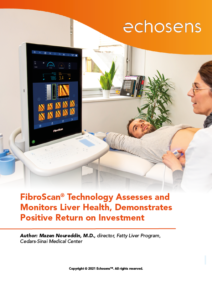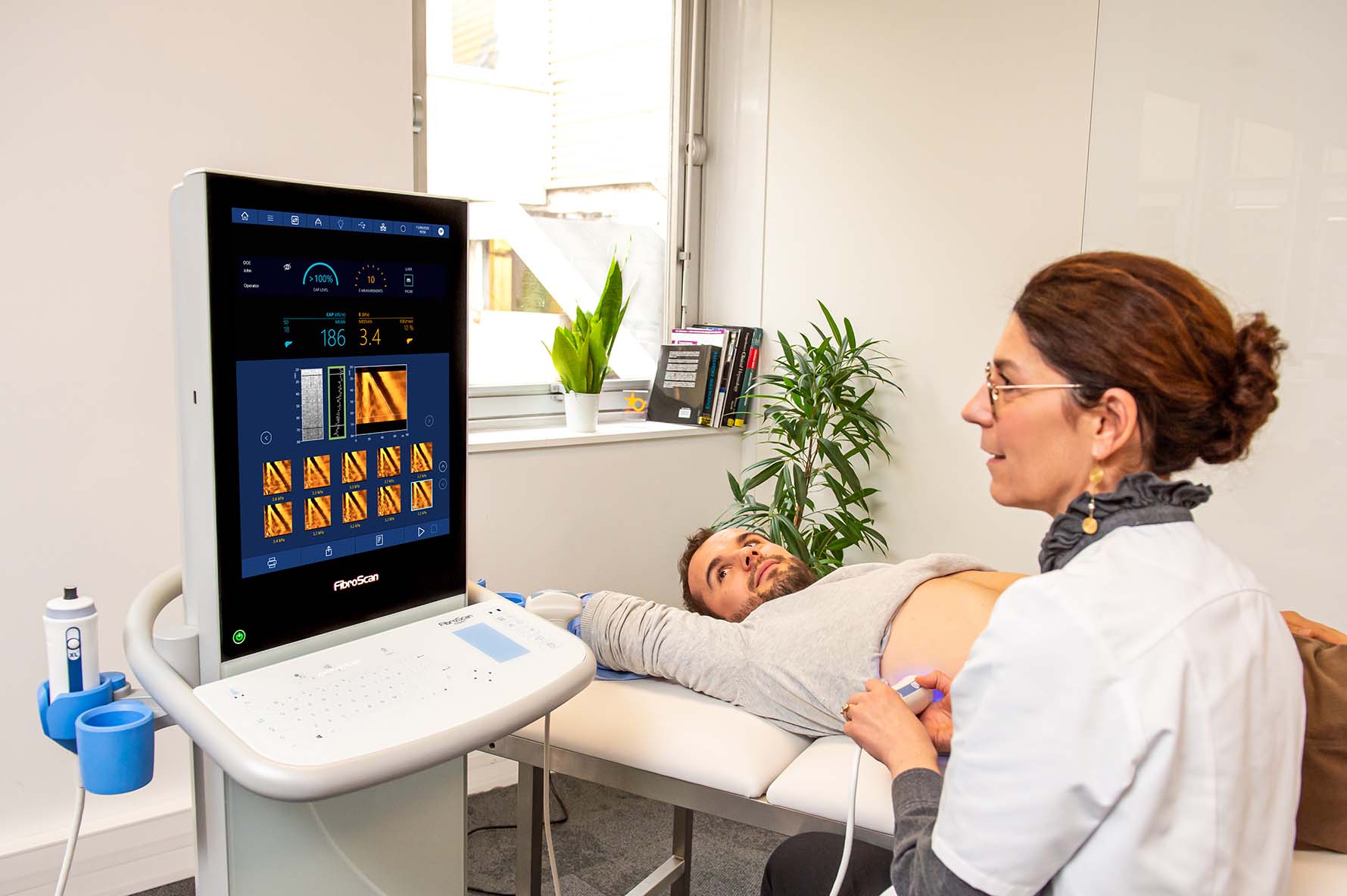With continued, accelerated rates of adult obesity and Type 2 diabetes—along with an aging population—non-alcoholic fatty liver disease (NAFLD) and mortality are expected to increase in the United States and globally. These trends prompt demand for earlier screening and strategies to curb the staggering costs associated with fatty liver disease (FLD).
However, there is good news: A study published in the American Journal of Managed Care (AJMC), “Population-Based Return on Investment of Deploying Transient Elastography Screening and Monitoring Fatty Liver Disease,” concluded that early identification of patients with FLD through broad placement of VCTE™/CAP™ devices offers cost savings to payers.
Echosens’ latest white paper highlights the findings of this independent assessment conducted by Santa Barbara Actuaries Inc. (SBA) to evaluate from the payer’s perspective the cost effectiveness of deploying vibration-controlled transient elastography (VCTE)/controlled attenuation parameter (CAP™) technology for detecting and monitoring FLD.
Understanding Fatty Liver Disease
FLD is characterized by the accumulation of fat in liver cells and further distinguishes between NAFLD and alcoholic fatty liver disease (AFLD), depending on whether heavy alcohol use is involved. Besides the distinction of alcohol, both types of diseases have similar diagnostic pathways.
NAFLD has been estimated to impact around 5% of the U.S. population. While lower in prevalence compared to NAFLD, AFLD surpassed hepatitis C virus (HCV) as the leading indication for liver transplants in 2016, and a 2018 U.S. population-based study demonstrated that individuals aged 25 to 34 years have experienced the fastest increasing cirrhosis-related mortality in recent years, driven entirely by alcohol-related liver disease.
NAFLD is an independent factor for cardiovascular disease and can progress to a more advanced form known as non-alcoholic steatohepatitis (NASH), which consists of inflammation and cellular injury in addition to fat accumulation that can progress to cirrhosis and hepatocellular carcinoma.
Achieving ROI with VCTE
Most FLD patients are asymptomatic and undiagnosed. This has led to delayed identification of advancing liver disease, which can have significant human and economic costs. In fact, the American Diabetes Association has recently called for assessment of NAFLD in pre-diabetic patients and diabetic patients who have elevated liver enzymes to address the lack of timely identification of NAFLD. Indeed, screening for NAFLD in Type 2 diabetes patients at age 40 is cost-effective when using Echosens’ FibroScan.
For payers seeking cost effective and easily implemented liver assessment strategies available at the point of care, VCTE and CAP represent a potential solution.


